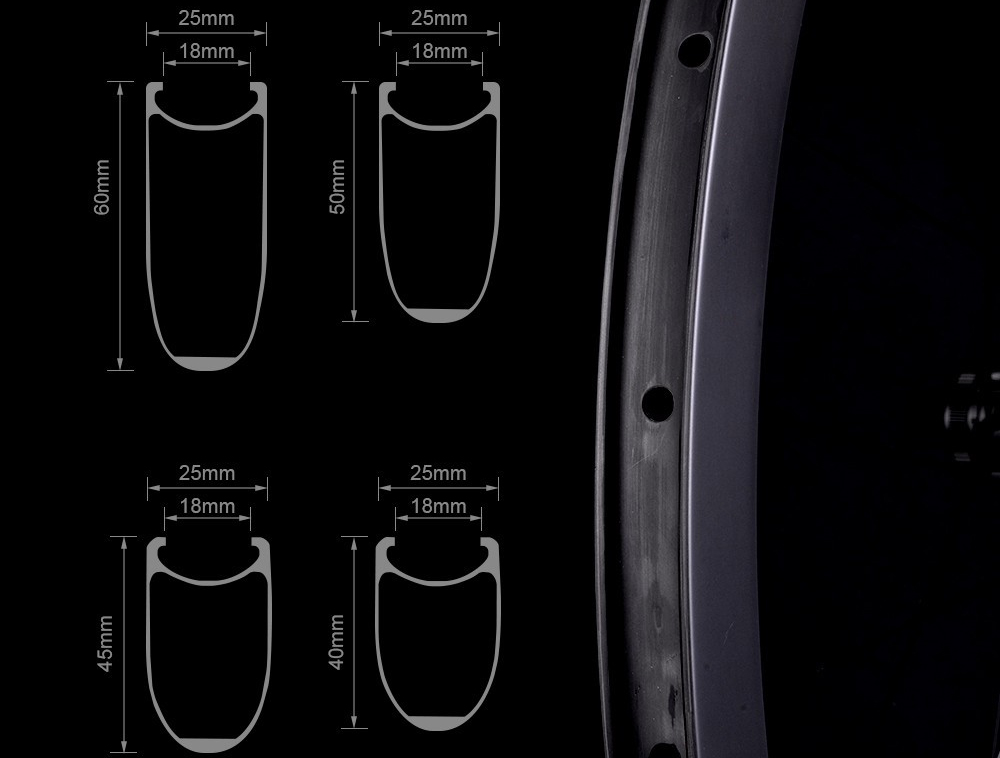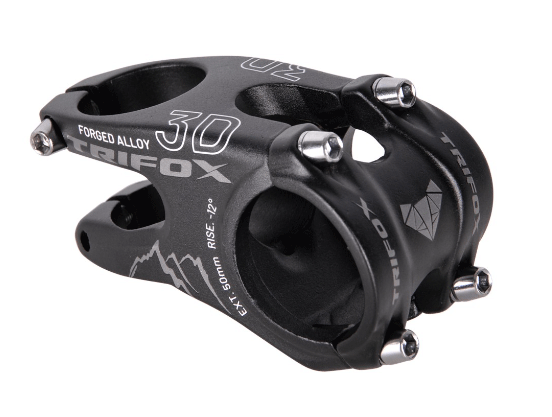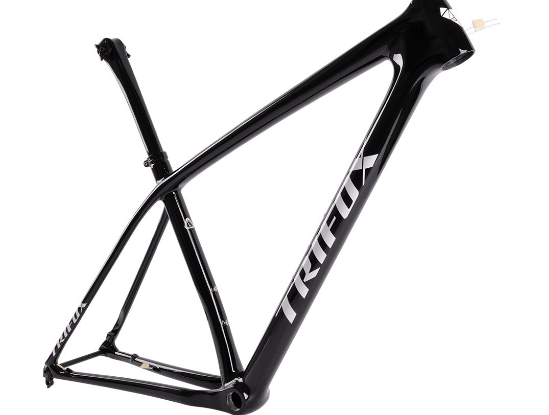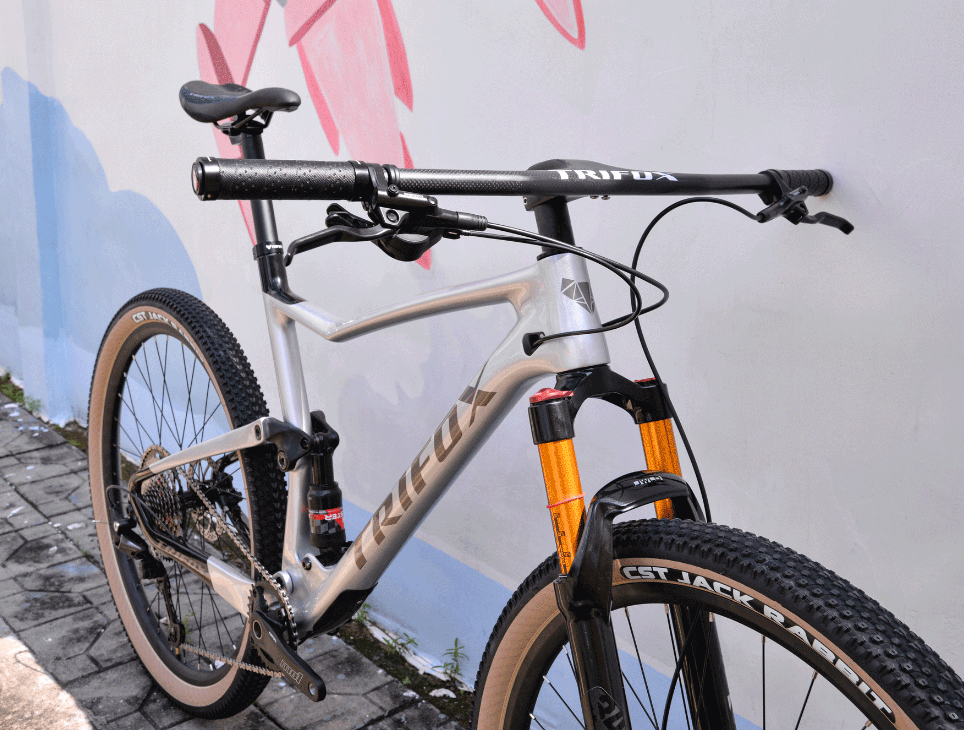Dual suspension bicycles, also known as full-suspension bicycles, offer a comfortable ride over rough terrain. They absorb shocks from both the front and rear wheels, reducing the impact on the rider. However, to keep your ride smooth and your bicycle in top condition, regular maintenance and proper adjustment are key. This guide will walk you through the process.

Understanding Your Dual Suspension System
The dual suspension system in your bicycle consists of a front fork and a rear shock absorber. The front fork absorbs impacts from the front wheel, while the rear shock absorber does the same for the rear wheel. These components work together to provide a smoother ride over rough terrain.
Routine Maintenance
Regular maintenance of your dual suspension bicycle involves several steps:
1. Check for Loose Bolts: Ensure all bolts, especially those on the suspension system, are tight.
2. Check Tire Pressure:Proper tire pressure is crucial for optimal suspension performance. Consult your bike’s manual for the recommended pressure.
3. Inspect the Frame: Look for cracks or damage that could affect the bike's structural integrity.
Adjusting Your Suspension
Adjusting your suspension to match your weight and riding style can significantly improve your ride quality. Here's how:
1. Adjust the Sag:Sag refers to how much your suspension compresses under your weight. Most manufacturers recommend a sag of about 25-30% of the total travel.
2. Adjust the Rebound:The rebound controls how quickly the suspension returns to its original position after compressing. The right setting depends on personal preference and the terrain.
Professional Servicing
While routine maintenance can be done at home, some tasks require a professional. These include replacing worn-out parts and performing more complex adjustments. If you're unsure, it's best to consult a professional.
Conclusion
Maintaining and adjusting your dual suspension bicycle is crucial for optimal performance. Regular checks and adjustments will keep your ride smooth and prolong the lifespan of your bike. Happy cycling!


Biking enthusiasts know the importance of having the right equipment for a comfortable and efficient ride. One of the many bike components that can make a significant impact on your cycling experience is the handlebar stem. In recent years, the 31.8 handlebar stem has become a popular choice among cyclists, but what makes it stand out from the rest?
1. Improved Rigidity: The 31.8 handlebar stem is known for its increased rigidity as it has a larger diameter compared to other standard handlebar stems. The increased rigidity not only provides more stability when cycling but also enhances the precision of your bike’s handling, especially when negotiating corners or steep hills.
2. Lighter Weight: With its larger diameter, the 31.8 handlebar stem can also be made lighter, which makes it a popular choice for road racers and mountain bikers. Weight reduction on a bike component can make a noticeable difference to the overall weight of the bike and improve speed and riding efficiency.
3. More Comfortable Riding Position: The 31.8 handlebar stem has a shorter projection length compared to other handlebar stems. It means that the stem positions the handlebars closer to the rider, allowing for a more comfortable riding position. Additionally, the shorter projection length also reduces the amount of force and strain on the wrists and elbows.
4. Availability: As a more recent addition to bicycle components, availability is not an issue for the 31.8 handlebar stem. Many bicycle manufacturers and bike stores offer a wide range of options when it comes to the 31.8 handlebar stem, from different materials, colors, and sizes, making it an accessible choice for many riders.
5. Affordable Options: One of the myths surrounding the 31.8 handlebar stem is that it can be pricey, but that is not always the case. Many high-quality 31.8 handlebar stems are affordable and offer the same benefits as more expensive options, making it a budget-friendly option for those on a tight budget.

Conclusion: Choosing the right handlebar stem is crucial for having a comfortable, efficient, and safe ride as a cyclist. The 31.8 handlebar stem provides increased rigidity, lighter weight, a more comfortable riding position, and is readily available and affordable for many riders.
Whether you are a professional road racer or an occasional weekend cyclist, the 31.8 handlebar stem could be the perfect choice for improving your overall cycling experience. Check out Trifox Bike to find a lightweight alloy 31.8 handlebar stem that fits your biking needs and budget.

For any cyclist, having a good set of road wheels is integral to achieving peak performance on the road. The wheels you choose can greatly affect your riding experience, from the weight, to the stiffness, to the durability. Carbon and aluminum are two popular materials used in the construction of road wheels, each with their own unique advantages and disadvantages. So, which one is truly better?
In this blog post, we will discuss the pros and cons of carbon vs aluminum road wheels, and help you decide which one is the best fit for your cycling needs.
Carbon Road Wheels:
Carbon road wheels have significantly grown in popularity over the years due to their numerous advantages. Firstly, carbon road wheels are lightweight, making them perfect for hilly or mountainous terrain where a lighter bike can make a great difference. They are also stiffer than aluminum wheels, which means they are a more efficient source of power transfer from the cyclist to the road. Carbon is also known for its ability to dampen vibrations, allowing for a more comfortable ride. The downside of carbon wheels is that they can be costly, and more prone to damage in the event of an impact with potholes, cracks, and other obstructions on the road.
Aluminum Road Wheels:
Aluminum road wheels are popular for their affordability and durability, making them a great option for beginner or budget-conscious cyclists. They are heavier than carbon wheels but are still lightweight and can be relatively stiff with the right geometry. Aluminum wheels are also less likely to get damaged by potholes and rough roads, giving them a longer lifespan than carbon wheels. However, aluminum wheels can transmit more vibrations to the rider, leading to a potentially less comfortable ride than carbon wheels.
Carbon vs Aluminum Road Wheels - Which one should you choose?
When deciding whether to go for carbon or aluminum road wheels, it's important to consider your riding goals and needs. If you are looking for a smoother and faster ride, and don't mind spending a bit more, carbon road wheels are a great option. They are light, stiff, and can give you an edge in competitive cycling. However, if you're just starting out, or are on a budget, aluminum road wheels are a solid choice. They are durable, affordable, and can still provide an excellent cycling experience.
Beyond the price and the riding goals, there are many factors that cyclists consider when selecting road wheels. Some of these factors include the wheel's weight, its durability, the stiffness, and the aerodynamics. Each material has its own characteristics that can make it more or less suitable for various types of riders, so research carefully before making a decision.

In conclusion, carbon and aluminum road wheels both have their unique advantages and disadvantages. Ultimately, the choice between them should largely depend on your own individual cycling needs and goals. Identify what aspects of your wheelset are the most important to you and choose the material that best suits you. Regardless of whether you choose carbon or aluminum road wheels, selecting a high-quality set with a good reputation and proper maintenance can improve your cycling experience greatly. So, happy cycling!

As a cyclist, the handlebar stem is an essential component of your bike. It connects the handlebars to the bike's steerer tube, allowing you to steer and control your ride. Whether you're an experienced cyclist or a newbie, upgrading your handlebar stem can make a significant difference in your rides' comfort and performance.
1. Lightweight and Durable
This handlebar stem is made of 6061 T6 aluminum alloy, making it lightweight and strong. It weighs only 124g, making it an excellent option for riders who want to reduce weight and increase riding performance. Moreover, it's durable and offers excellent rigidity, ensuring that you'll always be in control of your ride. The stem has a 35mm handlebar clamp diameter and a 28.6mm steerer tube diameter, making it compatible with most mountain bikes.
2. Easy to Install
One of the standout features of this handlebar stem is how easy it is to install. It comes with four screws that attach the handlebar to the stem, making the installation process easy and straightforward. This means that you won't need any professional help to install it and spend less time fiddling with your bike and more time riding it.
3. Better Performance
The Lightweight 35mm Mountain Alloy Handlebar Stem ABS200 is perfect for off-road riding. It's stiff enough for uphill climbs and rough terrain yet has enough flex to absorb vibrations and impacts, providing a smoother ride and reducing rider fatigue. The stem's bolt-on faceplate design ensures the handlebars are secure and won't slip, even in the most challenging of conditions. This stem will provide you with better handling, control, and comfort on your rides.
4. Stylish Option
The ABS200 stem has a sleek and minimalist design, adding style to your bike. It's available in black, gold, and red colors, providing you with the option to choose the color that best suits your bike's aesthetics. Its clean design complements most mountain bikes, giving your ride a unique and sophisticated look.
5. Affordability
One of the standout features of this handlebar stem is its affordable price. With its high-quality materials and excellent functionality, it's an excellent option for riders who want to upgrade their ride without breaking the bank. It's an affordable investment in your ride's comfort and performance, making it an essential component of your mountain bike.

Conclusion:
Investing in a high-quality handlebar stem can make a significant difference in your ride's comfort and performance. The Lightweight 35mm Mountain Alloy Handlebar Stem ABS200 from Trifoxbike is the perfect handlebar stem for any rider, whether you're a newbie or an experienced cyclist. It's lightweight, durable, easy to install, and has an elegant and sleek design.
Moreover, it's an affordable option, allowing you to upgrade your ride without spending a fortune. Upgrade your ride today with the best handlebar stem – the Lightweight 35mm Mountain Alloy Handlebar Stem ABS200!

Do you want to upgrade your road bike with the best bar tape of 2023? Look no further than the Cycling Tape BHT10 from Trifox Bike. This amazing product combines comfort, durability, and style in one package, making it perfect for serious cyclists who demand the best.
What makes the Cycling Tape BHT10 stand out from other bar tapes on the market? Let's take a closer look:
1. Comfort: The BHT10 is made of high-quality EVA foam, which provides excellent shock absorption and reduces hand fatigue on long rides. The tape is also designed with a non-slip surface that provides a secure grip, even when your hands are sweaty.
2. Durability: The BHT10 is engineered to last, even under the toughest conditions. Its tough, weather-resistant construction ensures that it won't wear out or fade quickly, even after years of use.
3. Style: The BHT10 comes in a range of eye-catching colors and patterns, so you can customize your bike to match your personal style. Whether you prefer classic black or bold neon, there's a BHT10 tape that's perfect for you.
4. Easy Installation: The BHT10 is easy to install, thanks to its self-adhesive backing. Simply wrap it around your handlebars and you're good to go. Plus, the tape is easy to clean and maintain, so you can keep your bike looking great for years to come.
5. Value: Best of all, the BHT10 is an excellent value for its price. You don't have to spend hundreds of dollars to get a high-quality bar tape that meets all your needs. The BHT10 delivers premium performance at an affordable price.

Conclusion:
No matter what your cycling goals are, you'll be glad you upgraded to the Cycling Tape BHT10 from Trifox Bike. With its unbeatable combination of comfort, durability, style, easy installation, and value, this tape is the ultimate choice for serious cyclists who demand the best. Get yours today and take your road bike to the next level!

As mountain biking has evolved over the years, so have the materials used to make it. The latest technology that has taken the mountain biking world by storm is carbon fiber. Carbon fiber frames have become increasingly popular in recent years due to their incredible strength, light weight, and durability.
The first carbon fiber mountain bike frames were introduced in the late 1980s, and they quickly became the preferred choice among competitive mountain bikers. However, it wasn't until the 1990s that carbon fiber really began to gain traction in the mainstream mountain biking community. As carbon fiber manufacturing became more advanced, designers were able to create frames with more intricate shapes that provided improved strength and stiffness. These frames were also significantly lighter than their aluminum counterparts, making them ideal for high-speed racing.
Fast forward to today, carbon fiber MTB frames have come a long way since their early days. Designs have become more advanced, and manufacturers are now using a combination of different types of carbon fiber to create the perfect balance of strength, stiffness, and weight. The process starts with the selection of the right materials, which is crucial in ensuring the finished frame's quality. Different types of carbon fibers, including unidirectional, bidirectional, and woven, are used to build these frames.
Another aspect of evolution of MTB frames is the use of computer-aided design (CAD) technology. CAD software allows designers to create incredibly complex frame geometries, while accurately predicting performance and strength. This has played a significant role in the development of the latest carbon fiber frames, which are more robust and optimized than ever before. With this increased efficiency in design, designers can push the limits even further than in previous years.
Despite all the advancements, the magic of the carbon fiber frame's strength, lightness, and stiffness lies in its manufacturing process. Manufacturers, like Trifoxbike, use a sophisticated carbon molding process that involves layering sheets of carbon fiber cloth in a mold that's the exact shape and size of the frame. This produces an incredibly robust and precise frame that's durable enough to withstand the rugged terrain of even the most challenging trails.

Conclusion: Carbon fiber MTB frames have revolutionized the sport over the past few decades by making bikes lighter, stronger, and more durable than ever before. With advancements in materials, design, and manufacturing processes, it's no wonder that so many bikers are flocking to carbon fiber frames.
With many new carbon mountain bike frames available, it's an exciting time for the sport, and we can't wait to see what the future holds for this rapidly-evolving industry.

If you’re a cycling enthusiast, you probably know the importance of a quality bike that can help you achieve your fitness goals. However, while most cyclists may focus on the bike’s frame, wheels, or pedals, not many give much thought to the handlebars.
The truth is that handlebars can have a significant impact on your ride quality and comfort, and upgrading to drop handlebars can offer you a host of benefits that you may not have considered. In this post, we’ll explore the unseen benefits of drop handlebars that may convince you to make the switch.
1. Better Aerodynamics: One of the most significant benefits of drop handlebars is the enhanced aerodynamics they offer. With a lower position and less air resistance, you can ride faster and optimize your speed, especially on flat roads. If you frequently participate in time trials or triathlons, drop handlebars will undoubtedly give you an edge over competitors. Additionally, the lower hand position reduces pressure on your lower back, making for a more comfortable ride.
2. Increased Control and Stability: When you ride with drop handlebars, you have a wider range of grips and hand positions available. This provides increased control and stability when navigating hills, corners, or uneven terrain. You can also adopt a more aggressive riding position, which allows you to accelerate quickly and maintain proper balance. The variety of hand positions means you can shift your weight around and avoid overusing any particular muscles, keeping you fresh throughout the ride.
3. Reduced Strain on Your Hands: For riders who experience hand fatigue, numbness, or pain, drop handlebars can work wonders. The ergonomic design and comfortable grip options can help you alleviate pressure points on your hands and wrists. The lower position of the handlebars also takes your weight off your arms, reducing the strain on your upper body. With a more relaxed and natural posture, you’ll be able to ride longer distances without worrying about discomfort.
4. Customizable to Your Needs: Unlike other handlebars, drop bars are incredibly versatile and customizable. With different widths, lengths, shapes, and materials available, you can tailor your handlebars to suit your preferences. You can even use aero bars for a more aerodynamic position or add bar tape for extra grip and comfort. You can choose to ride with a shallow or deep drop depending on the type of riding you plan to do. Whatever your needs, there is a right set of drop bars for you.
5. Stylish and Professional Look: Finally, let’s be honest – drop handlebars look great! They give your bike a sleek and professional appearance and can set you apart from other cyclists who still use flat handlebars. They exude confidence, experience, and a desire for performance, making you look like a serious rider. Apart from the functional benefits, drop handlebars will also help you gain some much-deserved admiration from other riders.

Conclusion:
Upgrading to drop handlebars might be one of the best decisions you make as a cyclist. They offer a variety of benefits ranging from increased aerodynamics to reduced hand strain and improved control. Drop bars are versatile, customizable, and can give you a stylish and professional look.
If you’ve been hesitant about making the switch, consider the advantages that drop handlebars can bring to your ride experience. It may take some time to get used to them, but there’s no doubt that they’ll enhance your cycling performance and make your ride more enjoyable.

If you are a mountain biker or a road biker, you know how important it is to have a bike that can withstand your weight and the strain of the road. One of the most essential parts of any bike is the handlebar stem. This small but mighty part helps to keep you stable on rough terrain and allows you to steer with ease.
That's why the Trifox Lightweight 35mm Mountain Alloy Handlebar Stem ABS200 is a must-have for any serious biker. In this blog post, we'll dive into the details of this impressive handlebar stem.

Let's start by looking at the material. The Trifox handlebar stem is made of 6061 aluminum, which is known for its strength and durability. This material is commonly used in the aerospace industry, so you know it's built to last. Despite its strength, this handlebar stem is surprisingly lightweight, weighing in at only 97g ± 4g. You won't have to worry about adding unnecessary weight to your bike with this handlebar stem.
Next, let's talk about the clamp diameter. The handlebar clamp has a diameter of 35mm, which is the standard for most mountain bikes and road bikes. This means that it is compatible with a wide range of handlebars, giving you more options when it comes to customization or replacement. The fork clamp diameter is 28.6mm, which is also a standard size for most bikes.
The degree of this handlebar stem is 12°, which is ideal for most mountain bikers and road bikers. This degree offers a good balance between stability and comfort, allowing you to ride for longer periods without feeling fatigued. The 50mm length of this stem is also perfect for most bikers, providing enough leverage without being too long or too short.
Lastly, let's talk about the brand. Trifox is a reputable brand that has been in the bike industry for over 10 years. They specialize in creating high-quality bike parts that are both functional and stylish. The design of this handlebar stem is sleek and modern, making it a great addition to any bike. You won't have to sacrifice style for functionality with Trifox.
In conclusion, the Trifox Lightweight 35mm Mountain Alloy Handlebar Stem ABS200 is an exceptional bike part that combines strength and style. Its high-quality material, compatibility with standard sizes, comfortable degree, and reputable brand make it a must-have for any serious biker.
If you're looking to upgrade your bike, this handlebar stem is definitely worth considering. Don't let a weak handlebar stem hold you back from reaching your full potential on the road or trail - invest in the Trifox handlebar stem today!

Carbon bike frames have become increasingly popular due to their lightweight, durability, and strength. However, despite these benefits, carbon bike frames are more susceptible to damage and require special care in the event of an accident.
If you own a carbon bike frame, knowing how to fix it is essential to keep it in top condition. This guide will go over the steps on how to fix a carbon bike frame, the types of damage that can occur, and when it's necessary to take it to a professional.
Step 1: Assess the Damage
Before attempting to fix your carbon bike frame, take some time to assess the damage. Look for cracks, dents, or any other obvious signs of damage. It's important to have a good understanding of the extent of the damage before attempting any repairs.
Step 2: Clean the Damaged Area
Once you have identified the damage, the next step is to clean the area. Use water and a gentle cleaner to remove any dirt, debris, or grease around the damaged area.
Step 3: Sand the Damaged Area
After cleaning, use sandpaper to lightly sand the damaged area. The goal is to create a rough, textured surface for the repair to adhere to. Be sure to sand around the damage to create a smooth transition from the repair to the original surface.
Step 4: Apply Resin
The next step is to apply resin to the damaged area. Resin is a type of glue that is used to repair carbon bike frames. Apply the resin in thin layers, using a brush to spread it evenly. Allow the resin to dry completely between each layer.
Step 5: Sand the Repaired Area
After the resin has dried, use sandpaper to sand the repaired area. Start with a coarse grit and work your way up to a finer grit to create a smooth, even surface. Be sure to sand the edges of the repair to create a seamless transition between the repair and the original surface.

Conclusion:
In conclusion, fixing a carbon bike frame requires care, patience, and attention to detail. Always assess the damage, clean the area, sand the damaged area, apply resin, and sand the repaired area. Remember, if the damage is severe or you are unsure about your ability to fix it, take it to a professional. With these steps in mind, you can confidently repair your carbon bike frame and get back to riding. Happy biking!

























































